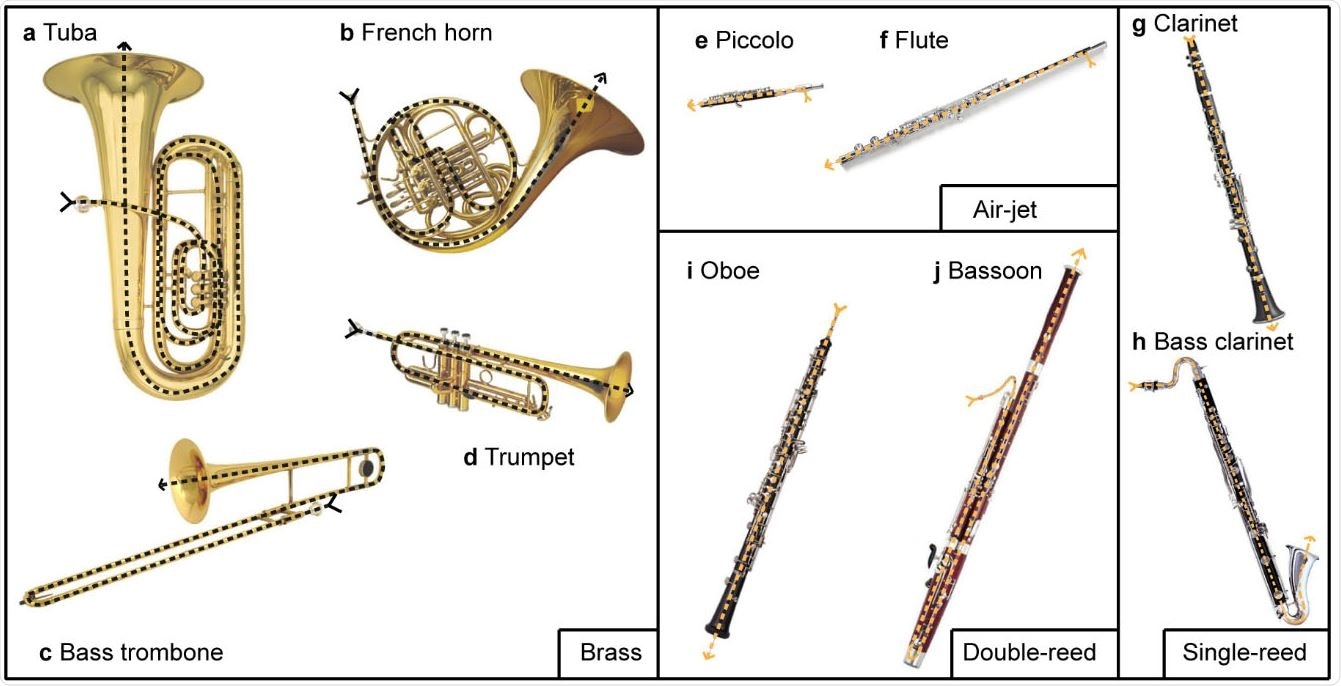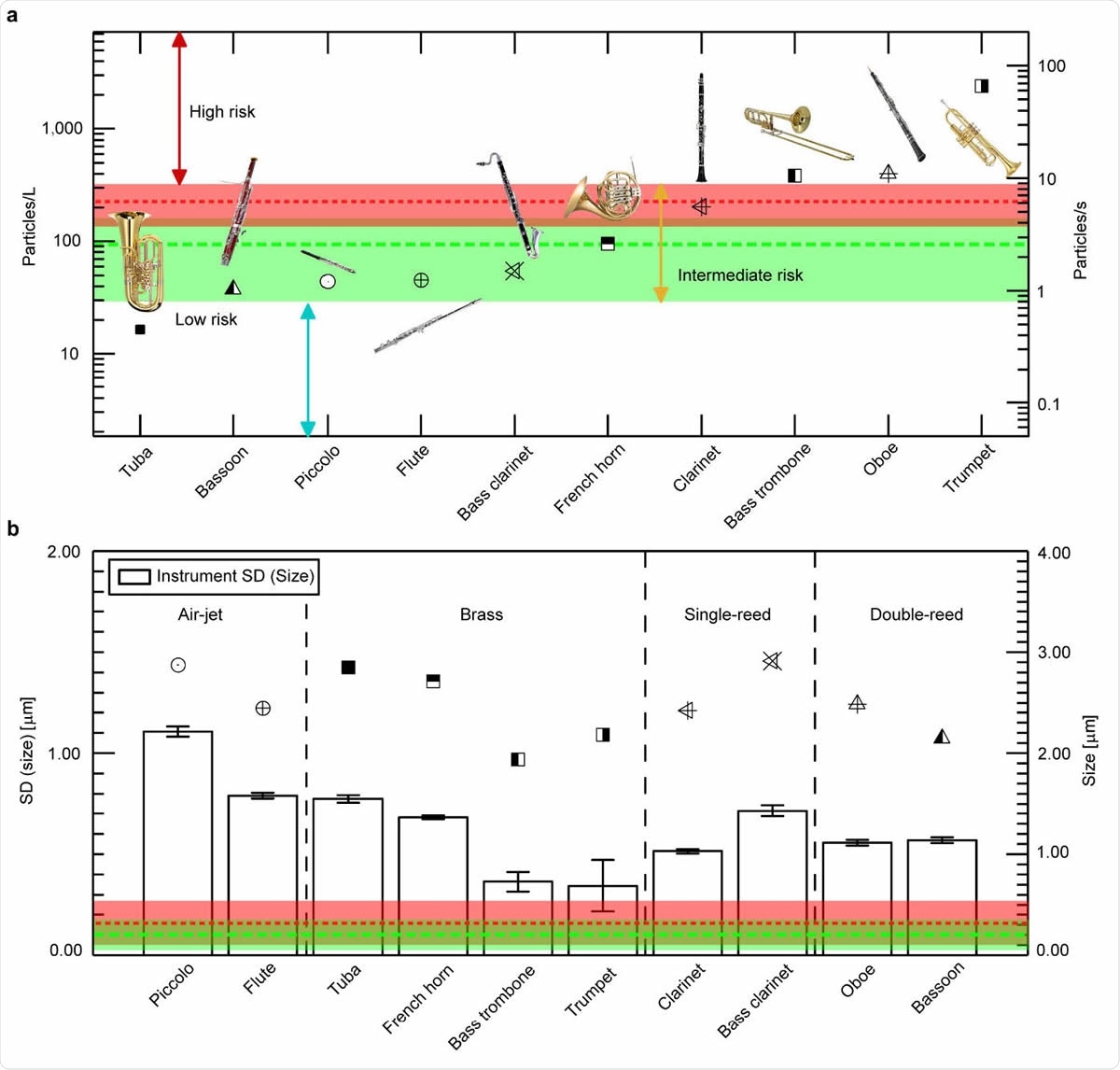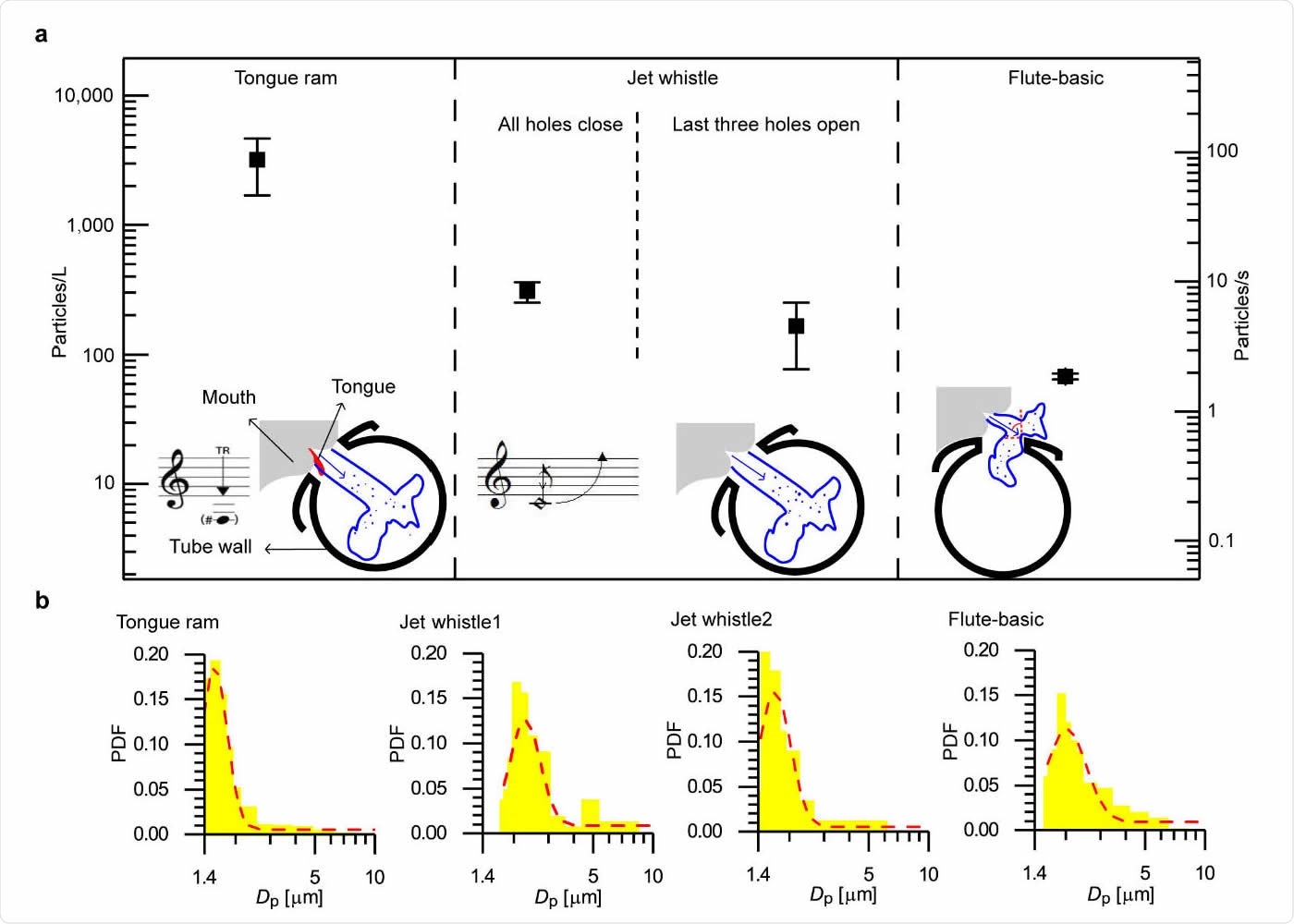One of the significant casualties of the COVID-19 pandemic has been shared creative activities, particularly singing and producing music together. These are all the more difficult to mitigate in that singing, and playing wind instruments, at least, are not suited to the use of masks. At the same time, it is dangerous to practice these activities without ensuring that the risk is understood, and appropriate measures are put in place to reduce the risk of viral transmission.

 This news article was a review of a preliminary scientific report that had not undergone peer-review at the time of publication. Since its initial publication, the scientific report has now been peer reviewed and accepted for publication in a Scientific Journal. Links to the preliminary and peer-reviewed reports are available in the Sources section at the bottom of this article. View Sources
This news article was a review of a preliminary scientific report that had not undergone peer-review at the time of publication. Since its initial publication, the scientific report has now been peer reviewed and accepted for publication in a Scientific Journal. Links to the preliminary and peer-reviewed reports are available in the Sources section at the bottom of this article. View Sources
Tragic Spread During Choral Practice
The memory of at least two episodes of mass infection of choir members, with several deaths, following rehearsals with proper social distancing, is still fresh and provides proof that this is an airborne pandemic. Singing and wind instruments produce even higher aerosols (up to 104 times) than normal breathing or speaking, indicating that these activities may fall into the superspreading category if the singer or player is asymptomatically infected.
Prior research has focused on airflows as a result of playing such instruments. While brass instruments induce airflow within half a meter of the outlet, woodwind instruments have a more extensive reach of over 1 meter. The current study is based on the measurement of aerosols from 10 wind instruments at different dynamic levels and articulation patterns of playing. The researchers show that aerosol generation varies by orders of magnitudes between different instruments and styles of music, as well as with the design of the instrument and the breathing characteristics.

Images of 10 instruments used for the aerosol measurements. Brass instruments include (a) tuba, (b) French horn, (c) bass trombone, and (d) trumpet. Air-jet woodwinds include (e) piccolo and (f) flute. Single-reed woodwinds include (g) clarinet and (h) bass clarinet. Doublereed woodwinds include (i) oboe and (j) bassoon. The dashed line marks the main flow path in each instrument.
Overview
The study involved 15 healthy musicians between 35 and 60 years, playing the following instruments: trumpet, bass trombone, French horn, tuba, flute, piccolo, bassoon, oboe, clarinet, and bass clarinet. For each instrument, three dynamic levels and two articulation patterns were tested, with two special techniques being additionally tested for the flute.
The researchers found that the aerosols from these ten instruments covered ~20 to ~2400 particles/L, encompassing the range of normal breathing and speaking at ~90 and ~230 particles/L, respectively. The tuba has lower aerosols than if the performer was breathing normally, while the trumpet, oboe, and bass trombone produce more, compared to normal speaking. This means the tuba is a low-risk instrument for airborne transmission while the latter is associated with the highest risk.

The concentration and size distribution of aerosols generated from different music instrument plays. (a) Aerosol concentration levels measured at the outlets of 10 orchestra instruments. Such levels are averaged across different dynamical levels, articulation patterns, and individuals. The green and red dashed lines mark the concentrations of breathing and speaking averaged over all participants, respectively (see Fig. S3 for the breathing and speaking results for musicians playing each instrument). The corresponding shaded regions represent the standard deviation (SD) of these measurements. (b) The average size (symbols) and size standard deviation (columns) of the aerosols generated during different instrument plays in comparison to and the corresponding breathing and speaking results (i.e., average and standard deviation illustrated in the same fashion as those in Fig. 1a). The error bar for the column is ± 1 standard deviation obtained using a bootstrap analysis by randomly selecting 80% data (out of 1200 data groups: two participants, 600 data groups: one participant available) to represent the uncertainty in ensemble-averaged statistics of the size variation here. Note that one of the trumpet musicians repeat three times instead of five times of the test and the trumpet test has 960 data groups. However, we checked the statistical robustness of results to ensure this small inconsistency of the measurements does not influence our experimental findings.
Type of Instrument
Brass instruments produce aerosols in inverse proportion to their tube length, as with longer narrower tubes, the aerosol tends to deposit inside the tube and not reach the outlet. The mouthpiece also impacts the aerosol in the case of woodwinds, especially with the flute and piccolo, which have an air-jet design. This produces the least concentration as most of the particles deposit near the inlet. The leakage of air near the inlet is also maximum with the air-jet instruments.
As the design moves to single-reed, as with the clarinet and bass clarinet, and then the double reeds (oboe and bassoon), this type of deposition reduces. However, the long tube of the bassoon means that despite being a double-reed, it produces the lowest aerosol concentration. The bass clarinet also has a lower concentration than the clarinet for the same reason. And finally, though the bassoon is a woodwind that is comparable to the bass trombone in length, the aerosol is an order of magnitude lower, due to the shape of the mouthpiece (half-circle or cone) compared to the circular orifice of the latter.
Apart from particle concentration, the wind instruments all generate particles of the same size distribution, which is larger than that of normal breathing or speaking, due to the forceful exhalation with playing such instruments.
Dynamics and articulation pattern
As the force of blowing increases, the airflow increases, but leakage and deposition of aerosols at the inlet also increases, leading to lower concentration at the outlets. Thus, when the instruments are mainly made up of straight tubes like the oboe, clarinet, and bassoon, increased dynamic level produces increased aerosol generation. However, with air-jet type instruments, the deposition factor dominates and leads to a negative correlation. With the long and complex instruments, notably the tuba, there is no correlation, while with the others in this group, the peak aerosol is seen with an intermediate dynamic level.
With slurred playing patterns, the free-reed instruments show higher aerosol production than with articulated, along with the bass clarinet and bassoon. With the oboe and clarinet, the mechanism of playing yields a higher aerosol with articulated notes, which overwhelms the deposition factor, leading to an upward trend. This is absent with bass clarinet and bassoon.

Influence of special techniques on the aerosol concentration for flute performance. (a) Aerosol concentrations generated from flute performance using special techniques including tongue ram and jet whistle with two variations (i.e., jet whistle 1 that has all holes closed, and jet whistle 2 that leaves the last three holes open) in comparison to that from the basic technique. Error bars represent the standard deviation of the measurement. The inset figures for each special technique include a schematic illustrating the flow of aerosols into the main tube of the flute and the corresponding music note. (b) Probability density functions (PDFs) of the aerosol size from flute performance using basic and different special techniques. The red dashed line in each histogram is the log-normal fitting curve of the PDF. In total 16 bins are used in the range from 1.4 to 20 μm.
Individual Factors
Players who naturally generate more aerosols with speaking or breathing, called super emitters, also generate more aerosols when they play. The researchers saw positive, negative, and no correlations with the use of clarinet, oboe, and bassoon, respectively. This is due to the use of specific breathing control techniques for free-reed instruments, producing an overriding artificial breathing pattern, which decreases the effects of individual natural breathing characteristics on aerosol production.
Play Techniques
The use of tongue ram and jet whistle is related to almost fifty-fold and five-fold increase in aerosol production, respectively. This is due to the sealing of the inlet with the lips, preventing air leakage and deposition near the tube.
The researchers say, “Our findings can be further generalized to other woodwind and brass instruments not included in the present study and for the safe arrangement of different musical performance settings.”

 This news article was a review of a preliminary scientific report that had not undergone peer-review at the time of publication. Since its initial publication, the scientific report has now been peer reviewed and accepted for publication in a Scientific Journal. Links to the preliminary and peer-reviewed reports are available in the Sources section at the bottom of this article. View Sources
This news article was a review of a preliminary scientific report that had not undergone peer-review at the time of publication. Since its initial publication, the scientific report has now been peer reviewed and accepted for publication in a Scientific Journal. Links to the preliminary and peer-reviewed reports are available in the Sources section at the bottom of this article. View Sources